Disclaimer: This post may contain Amazon affiliate links. Sudachi earns a small percentage from qualifying purchases at no extra cost to you. See disclaimer for more info.
What is Unagi Sauce?
Unagi sauce (うなぎのタレ or “unagi no tare”) is a special and iconic sauce that is used for Japanese eel dishes such as unagi donburi, una jyu, kabayaki and sushi. It’s thick, sweet, and dark in color. The eel is usually basted with the sauce during cooking and then drizzled with extra sauce at the end.
If you have ever passed by an eel restaurant in Japan, you know that there is an indescribably delicious aroma wafting through the air. Some people in Japan even say the sauce determines whether an unagi restaurant is good or not.
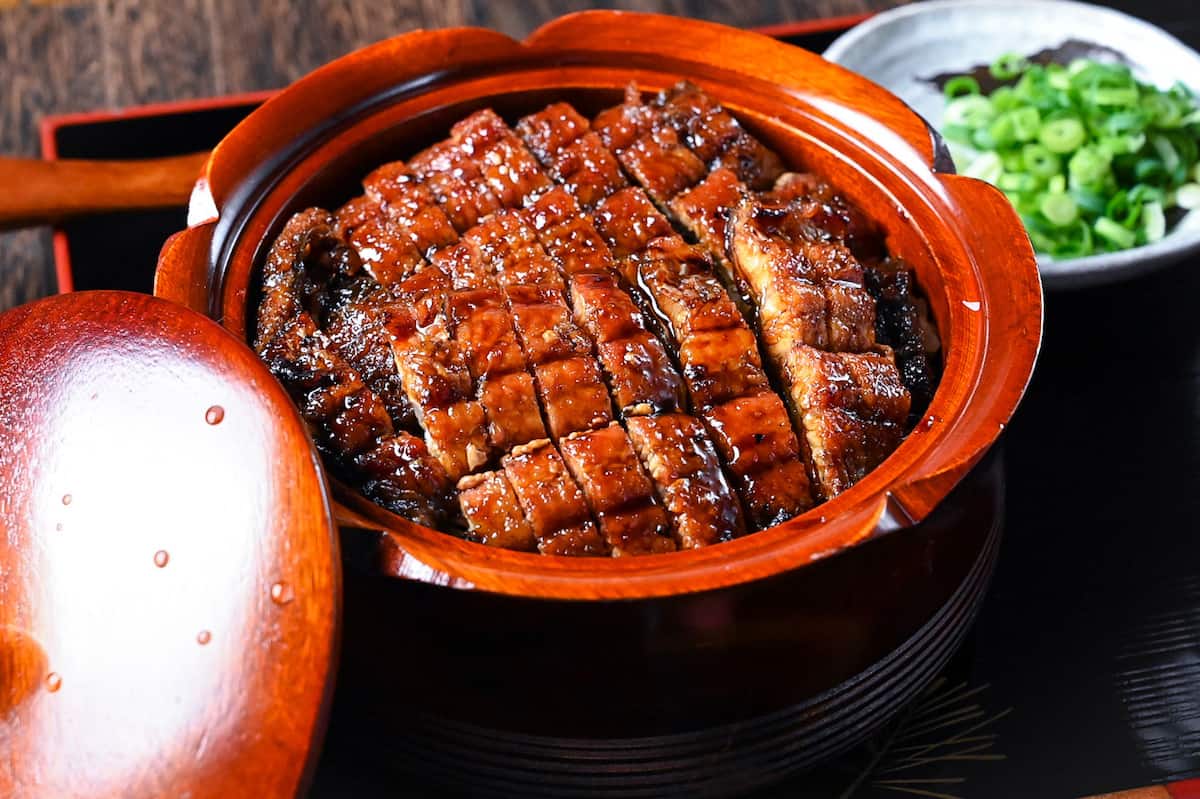
I know I’m going to describe how to make eel sauce at home, but I have to say, nothing can beat eel sauce at unagi specialty restaurants, and there are a few solid reasons behind it.
First of all, most eel restaurants make unagi sauce from sake, mirin, sugar, and soy sauce. It doesn’t seem too hard to recreate at this point, right? However, proper eel restaurants use the head and bones of the eel together after grilling to create depth.
The main reason is that long-established eel restaurants have been using the exact same unagi sauce for decades, even centuries, by topping up the original sauce. The sauce itself carries the history. It’s incredible to think that the sauce in these restaurants is actually from centuries ago.
The depth of the sauce is achieved by continuing to add and use it over and over again, day after day, month after month, topping it up continuously. In addition, the smokey smell adds a unique flavor to the sauce, which cannot be achieved in the first sauce or homemade sauce.
But you might be wondering, “Is it hygienically safe to keep it for that long?” Long story short, it’s fine because of the 3 following reasons:
- They become pasteurized: by soaking the freshly grilled eel in the sauce, the temperature of the sauce rises, resulting in pasteurization.
- High salt and sugar content: the high salt and sugar content makes it difficult for bacteria to grow (but not completely rot-proof).
- The contents are replaced by adding additional sauce: I know it sounds like it defeats the purpose, but even though the sauce has been spliced for more than 100 years, the contents have been replaced, so in reality the old sauce is a tiny amount.

How I Developed This Recipe
Creating the ideal eel sauce at home was my sole focus while developing this recipe. Despite acknowledging that replicating the exact sauce from a historic eel restaurant might be impossible, I persisted in my efforts to get as close as possible.
The outcome is a homemade eel sauce that’s exceptionally delicious, surpassing store-bought options available in the market.
This sauce not only pairs wonderfully with eel but also enhances other fish dishes. I encourage you to try it and experience its unique flavor!
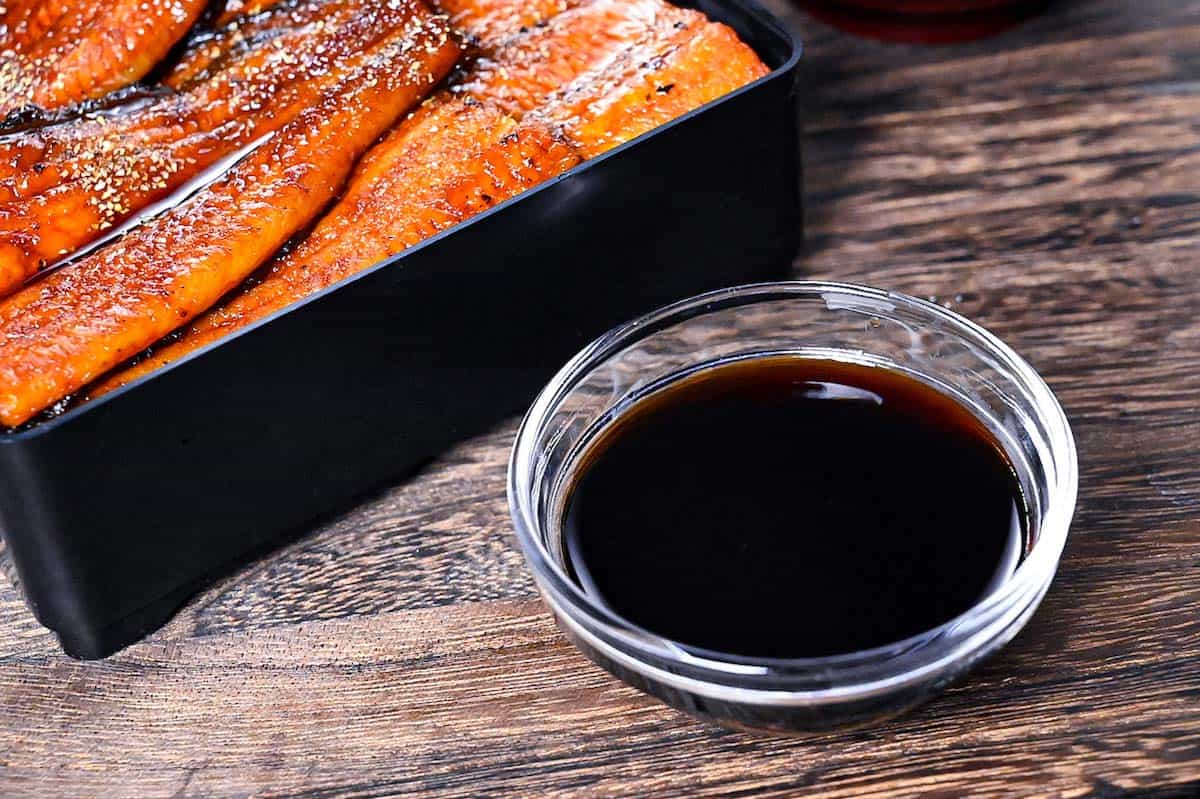
Ingredients & Substitution Ideas
- Turbinado Sugar – I use this light brown, coarsely textured sugar for its distinct sweetness and flavor.
- Dark Brown Sugar – A touch of muscovado or dark brown sugar creates richness in the sauce. The combination of turbinado sugar and muscovado gives the sauce a deep, sweet, slightly molasses flavor, which becomes nicely balanced with the soy sauce.
- Sake – For the purest flavor, use unsalted drinking sake. Cooking sake works, but you must adjust the salt content as cooking wine contains salt. My ‘Sake 101‘ explains more
- Mirin – Hon-mirin (本みりん) like Hinode Hon Mirin has the most authentic Japanese taste. Check my mirin guide for insights.
- Soy Sauce – Kikkoman is a reliable, affordable global soy sauce option. See my soy sauce guide for details.
Curious about the exact brands and products that bring my recipes to life? Discover the brands and ingredients behind my recipes at the Sudachi Amazon Storefront. Explore my handpicked pantry essentials and find your next kitchen favorites!
Jump to Full Recipe Measurements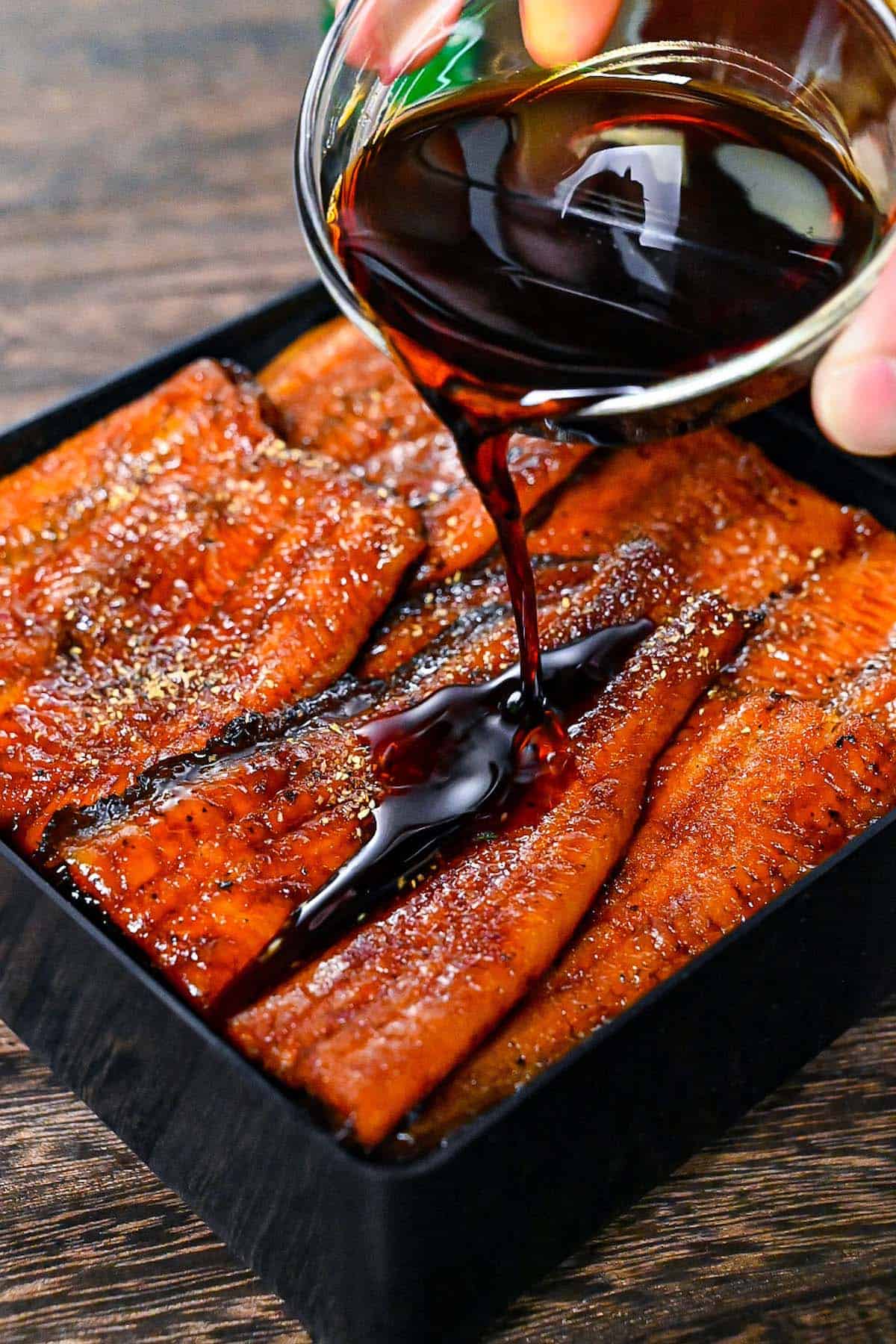
Visual Walkthrough & Tips
Here are my step-by-step instructions for how to make Unagi Sauce at home. For ingredient quantities and simplified instructions, scroll down for the Printable Recipe Card below.

Start by adding the sugar to the pan and heating it on medium. The goal here is to start melting the sugar to make a caramel. Once it starts melting, move on to the next step (it doesn’t need to be fully melted at this point).
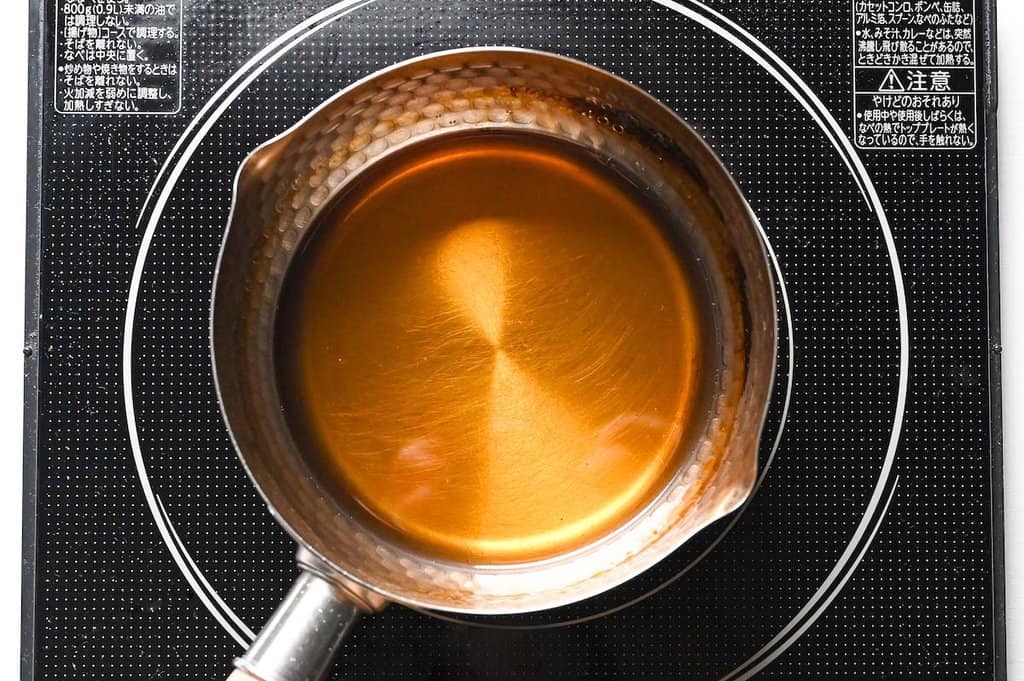
Next, add the mirin and sake. Mix well until the sugar is fully dissolved and bring it to a boil. Allow it to bubble for 1-2 minutes to burn off the alcohol in the mirin and sake.
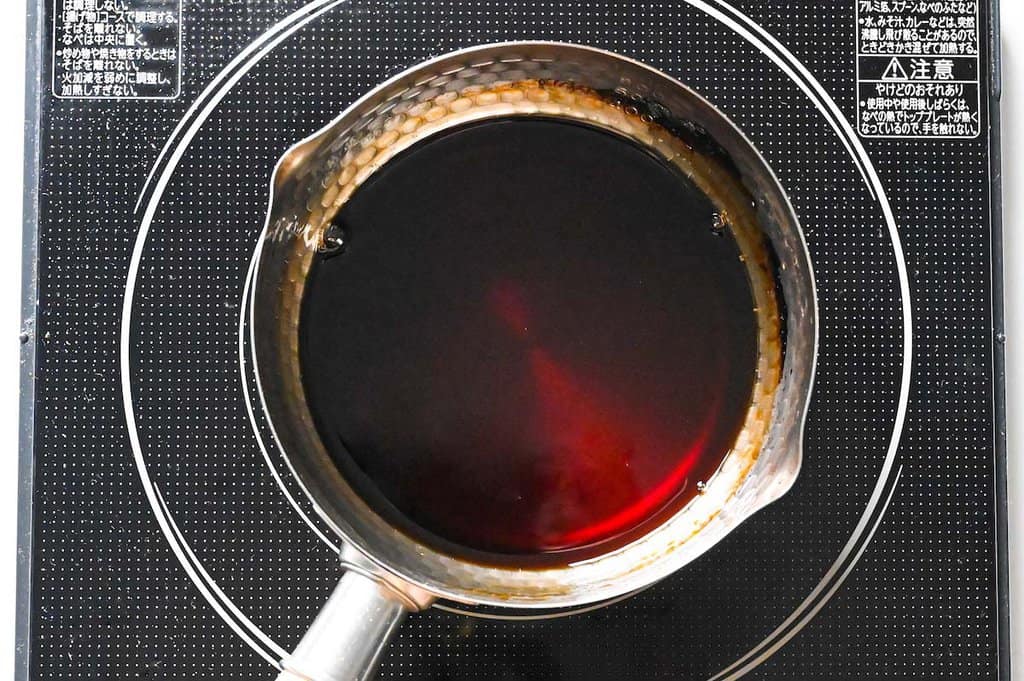
Lower the heat to a simmer and add the soy sauce. The reason we add it last is because soy sauce burns quite easily; if it’s added at the beginning, your sauce could become bitter.
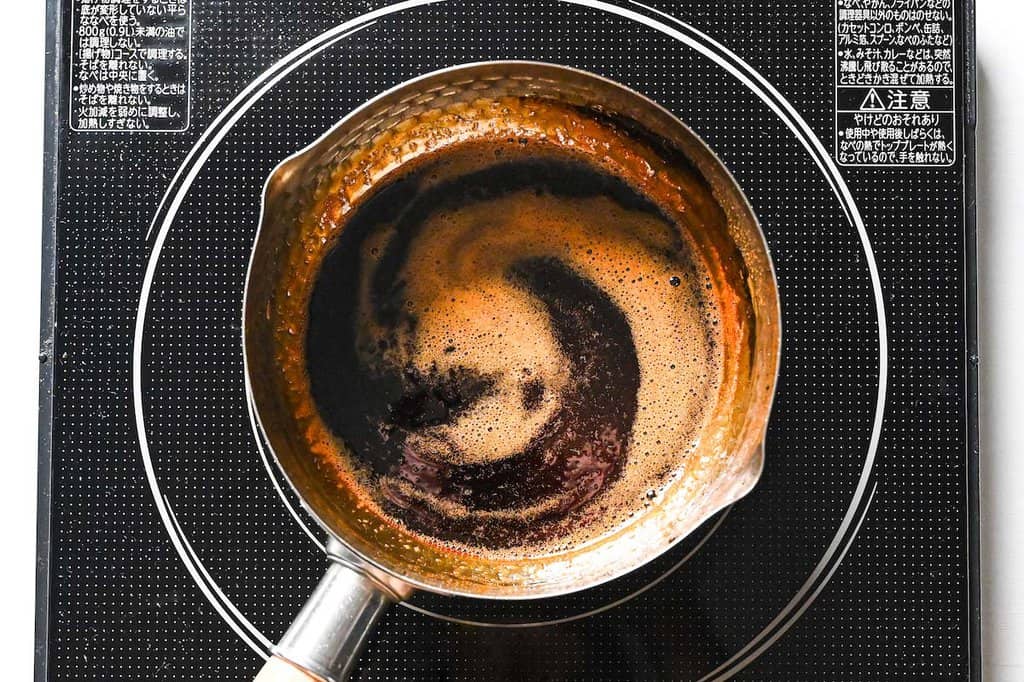
Allow to simmer over the low heat while mixing occasionally until the sauce is thickened, this should take about 10 minutes. You will find some foam forms around the top. Scoop this out with a spoon to make your sauce glossy and clear.
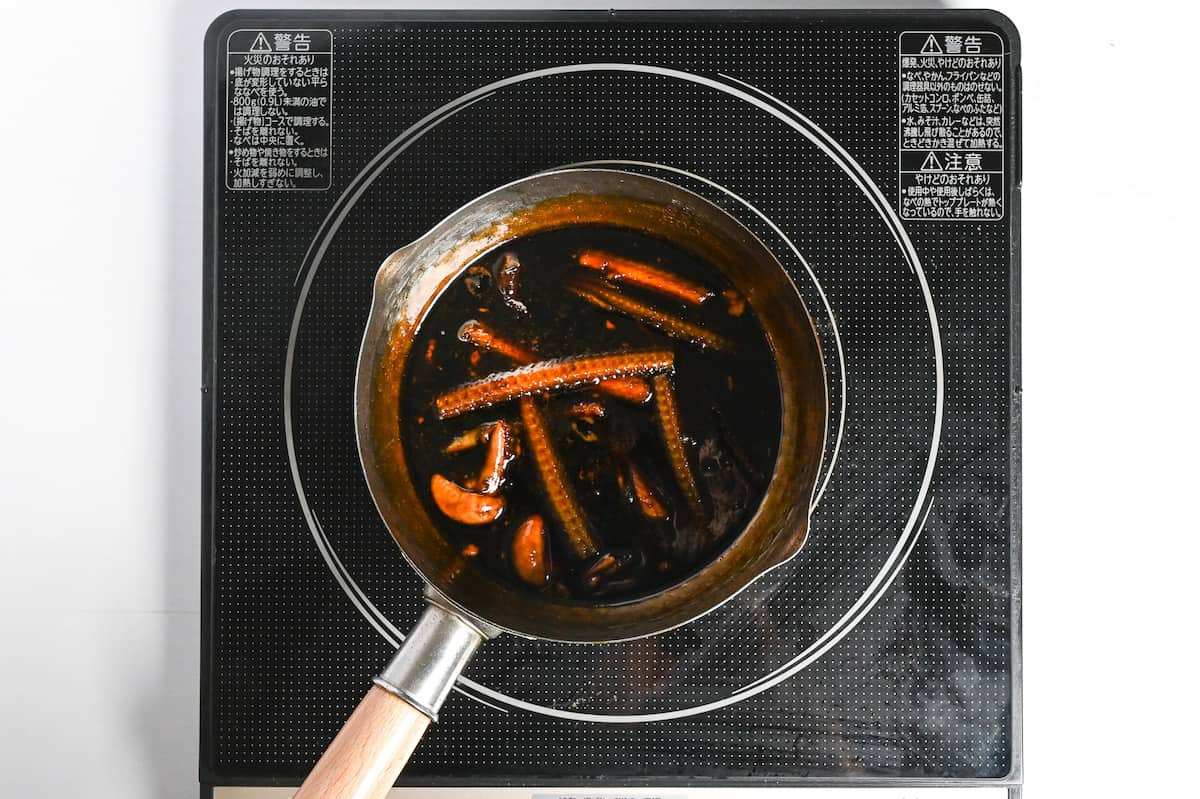
How to Store
Generally leftover homemade unagi sauce should be kept in an airtight container in the fridge and used within 1-2 weeks.
However, because of the high sugar content, it is possible to keep it for longer if stored properly, directly after cooking (this doesn’t work for leftovers). Once it’s cooked, transfer it directly to a sterilised, airtight jar then you can keep it in the fridge for 2-3 months.
Please note that once it’s opened for the first time after sterilisation, it should be used within the original “1-2 weeks”.
Other Ways to Use
Unagi sauce doesn’t only have to be enjoyed with eel, it’s actually very versatile and goes with lots of different things! Here are a few ideas on different ways to enjoy unagi sauce:
- Mixed with rice
- On yaki onigiri (grilled rice ball)
- With tamago kake gohan
- Stir fried pork
- On other kinds of grilled/fried fish (yellowtail, mackerel, etc)
- With grilled/pan fried chicken
- For yakitori (Japanese grilled chicken skewers)
- On ribs
What’s your favourite way to use up leftover unagi sauce? Let us know in the comments below!
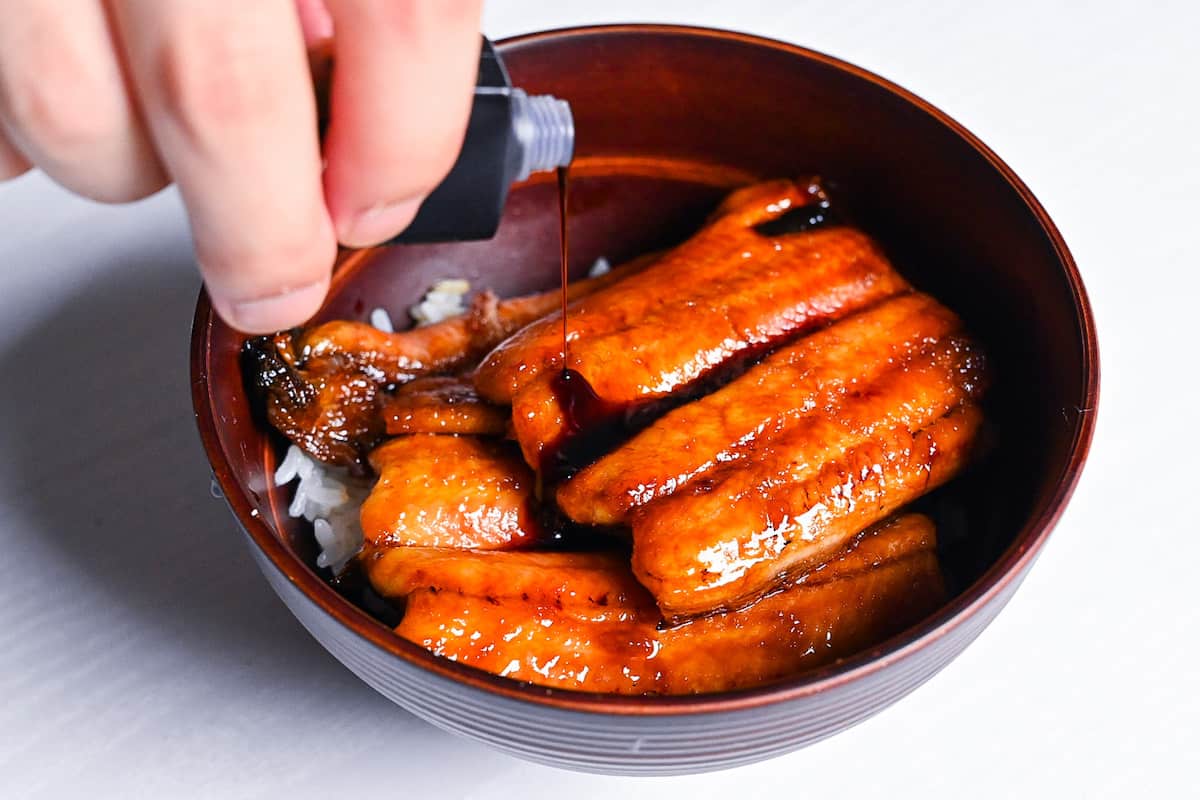
When it comes to the taste, eel sauce is very sweet sauce compared to other Japanese sauces. It has a good balance of sweetness and saltiness, a flavor that makes the rice go down a treat. As for the consistency, it’s definitely quite thick and sticks to grilled eels very well.
If I have to compare it with some other sauces, it’s similar to tendon sauce and yakitori sauce. However, tendon sauce contains dashi broth, giving the dish a typical Japanese flavor and gently enveloping the ingredients such as shrimp.
As for yakitori sauce, the base ingredients are more or less the same, but they may have different ingredient ratios and contain additional ingredients such as garlic, ginger, or chili.
In Japan, most supermarkets have eel sauce, so you can easily get it everywhere. Outside of Japan, however, ordering online is the easiest option to buy decent eel sauce.
For example, on Amazon, you can get pre-made Japanese eel sauce. But as you will find out, making homemade eel sauce is so easy and the ingredients are pretty accessible, so I highly recommend making it at home!
It really depends on the restaurant or manufacturer. A lot of unagi specific restaurants use eel’s heads and bones to create depth. However, homemade eel sauce rarely has actual eels in it.
Again, it really depends on the restaurant or manufacturer, whether they use eel bones in their sauce, but my homemade eel sauce recipe is vegan friendly.
Yes, it’s a very sweet sauce containing high amount of sugar and mirin.
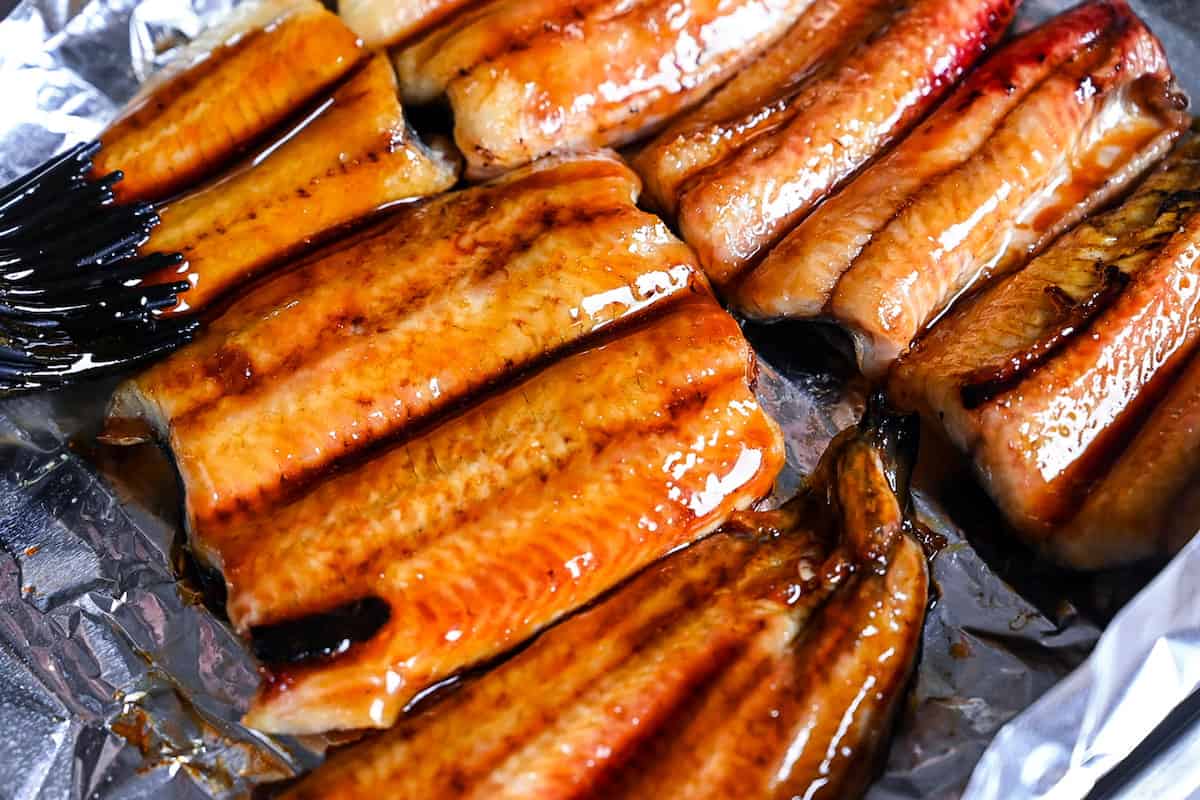
I hope you enjoy this Unagi Sauce recipe! If you try it out, I’d really appreciate it if you could spare a moment to let me know what you thought by giving a review and star rating in the comments below. It’s also helpful to share any adjustments you made to the recipe with our other readers. Thank you!
More Japanese Sauce Recipes
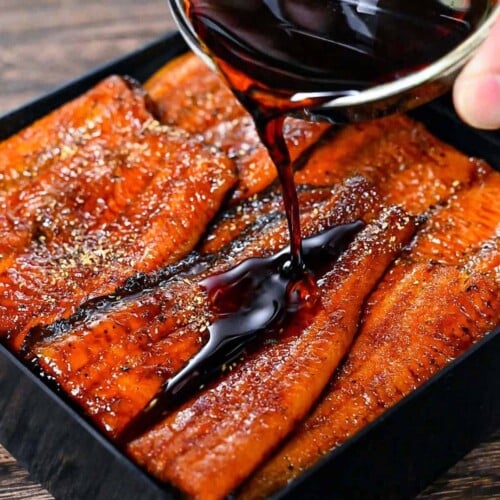
Homemade Unagi Sauce (Sweet Eel Sauce)
Ingredients
Instructions
- Add 3 tbsp turbinado sugar and 1 tsp muscovado sugar to a small saucepan and heat on medium.

- Once it starts to melt, add 75 ml sake and 75 ml mirin. Stir occasionally while you bring it to a boil.

- Allow to boil for 1-2 minutes and then turn the heat down to low, then add 75 ml soy sauce and simmer for 10 minutes or until thickened.

- Scoop out any foam that forms on the surface. Once thickened to a syrup-like consistency, remove from the heat and allow to cool.

- Enjoy!
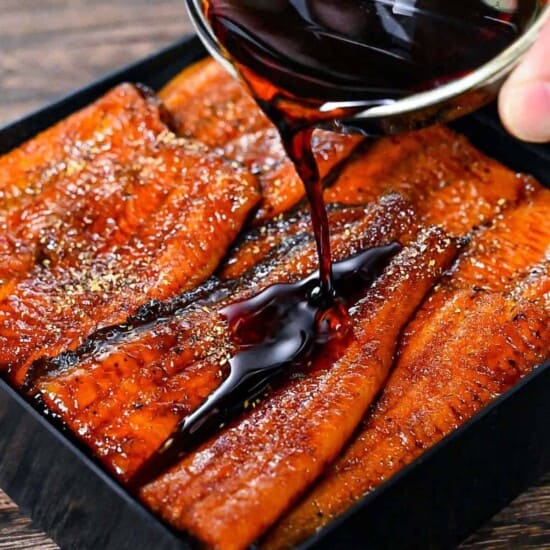


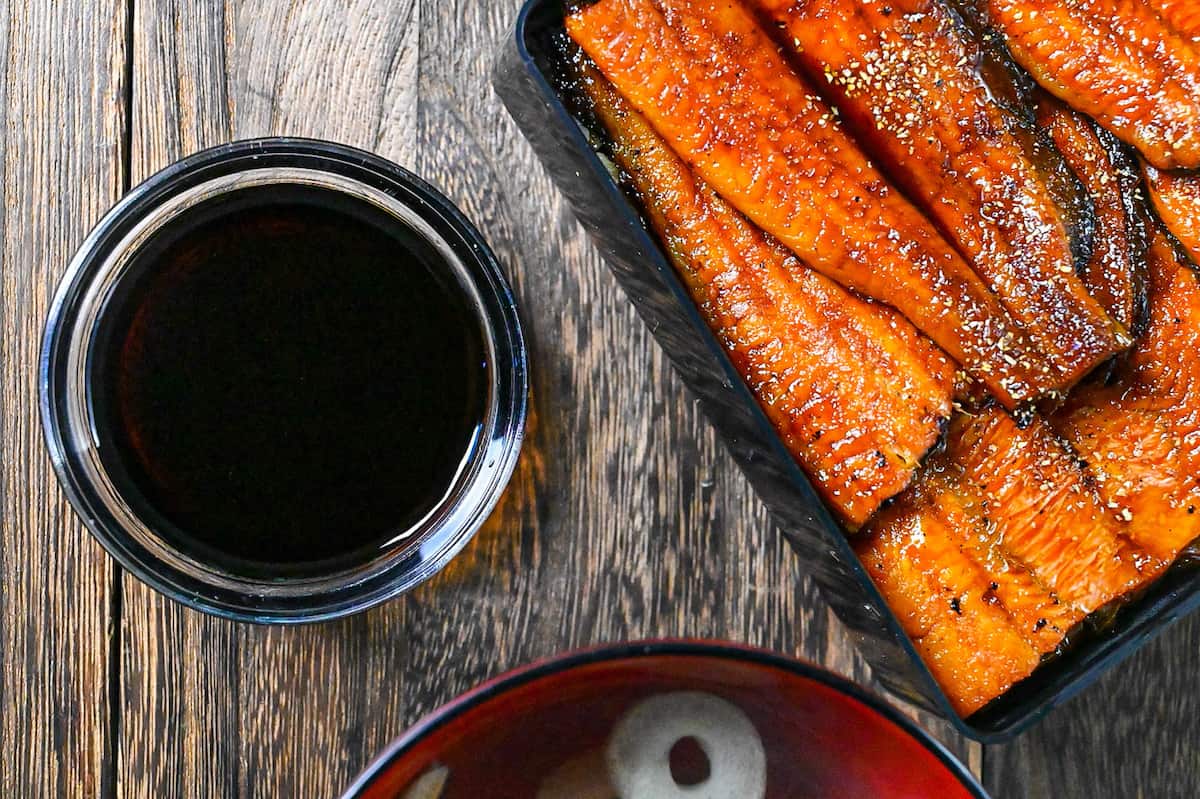
Do you have a variation of this that does use eel heads and bones? I’ll go to great lengths to make the best eel sauce; sourcing whole eels isn’t out of the question
Hi Eric,
Great question! If you have eel heads and bones, grill them thoroughly (until the bones have no moisture left and the surface is slightly charred) and then add them to the sauce during step 2 with the sake and mirin. Then just follow the recipe as normal and pour the sauce through a strainer at the end to remove the bones.
Hope this answers your question, and hope you like the recipe.